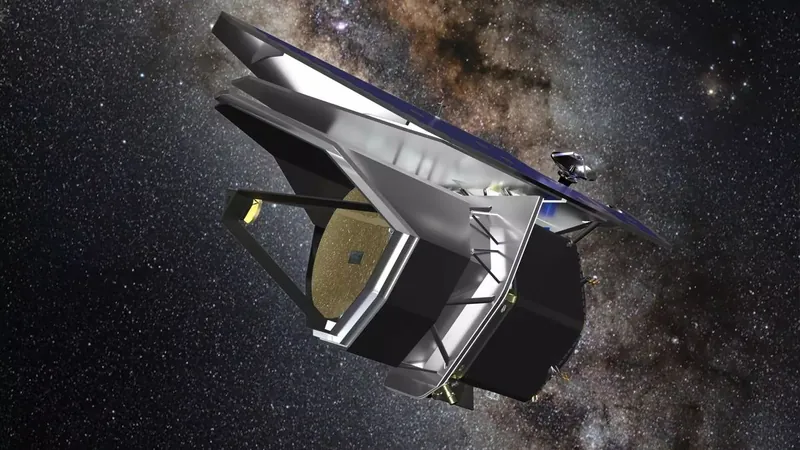
Cosmic Showdown: NASA's Next Space Telescope Awaits Selection Between PRIMA and AXIS
2024-11-28
Author: Nur
Introduction
In an exciting race to explore the universe, two leading space telescope designs are vying to become NASA's first mission in the newly established "Probe" class, set to launch in 2032. The PRIMA (Probe far-Infrared Mission for Astrophysics) and AXIS (Advanced X-ray Imaging Satellite) missions have entered their final design studies, with a funding boost of $5 million each to support their efforts until a decision is reached in 2026.
PRIMA: Unlocking the Far-Infrared Frontier
PRIMA aims to revolutionize our understanding of the cosmos by focusing on far-infrared wavelengths. By examining light at unprecedented lengths between 24 and 261 microns, it fills a critical gap between the infrared capabilities of the James Webb Space Telescope (JWST) and the observations of radio telescopes. In a recent workshop held at NASA's Jet Propulsion Laboratory, the international PRIMA team, led by Jason Glenn from NASA's Goddard Space Flight Center, kicked off its design study with collaborators from the U.S. and Europe. Notably, this mission is being bolstered by experts from the Max Planck Institute for Astronomy in Germany, where vital mission components, including advanced beam-steering mirrors, are being constructed.
AXIS: Probing the Deep Mysteries of the Universe
On the other side of the competition, AXIS, spearheaded by Chris Reynolds of the University of Maryland, aspires to delve deep into the mysteries of black holes in distant galaxies, particularly those identified by the JWST. AXIS will focus on studying how these black holes, along with cosmic events like supernova bursts, influence their surrounding environments. The satellite will also track fleeting astronomical events — dubbed "transients" — which could represent everything from gamma-ray bursts to occasional activity from neutron stars.
The Unique Advantages of PRIMA and AXIS
With each mission offering unique scientific advantages, NASA faces a challenging decision. PRIMA is set to be 100 times more sensitive than previous missions, including NASA's Spitzer Space Telescope and ESA's Herschel Space Observatory, enabling it to analyze the chemical make-up of planet-forming disks around new stars. To achieve optimal sensitivity, PRIMA must operate at a frigid -269 degrees Celsius, just above absolute zero, employing cutting-edge superconducting sensors known as Kinetic Inductance Detectors (KIDs).
AXIS: A Successor to Chandra?
Meanwhile, AXIS promises to be a critical successor to the aging Chandra X-ray Observatory, whose operational future remains uncertain amidst budgetary constraints. If selected, AXIS would collaborate with JWST to investigate black holes dating back over 13 billion years while filling the potential observational void created by a Chandra shutdown.
The Motivation Behind New Missions
The impetus for these Probe-class missions arises from a recent astrophysics decadal survey which highlighted the pressing need for new medium-scale missions. As the timeline for next-generation observatories like Hubble and Chandra extends decades into the future, these new missions will harness a budget capped at $1 billion to expedite our exploration of the universe.
Conclusion
No matter which mission is ultimately chosen, PRIMA or AXIS will undoubtedly enhance our cosmic knowledge and reveal new insights into the workings of the universe. Stay tuned as we follow this thrilling competition that could reshape the future of astrophysics!



 Brasil (PT)
Brasil (PT)
 Canada (EN)
Canada (EN)
 Chile (ES)
Chile (ES)
 España (ES)
España (ES)
 France (FR)
France (FR)
 Hong Kong (EN)
Hong Kong (EN)
 Italia (IT)
Italia (IT)
 日本 (JA)
日本 (JA)
 Magyarország (HU)
Magyarország (HU)
 Norge (NO)
Norge (NO)
 Polska (PL)
Polska (PL)
 Schweiz (DE)
Schweiz (DE)
 Singapore (EN)
Singapore (EN)
 Sverige (SV)
Sverige (SV)
 Suomi (FI)
Suomi (FI)
 Türkiye (TR)
Türkiye (TR)